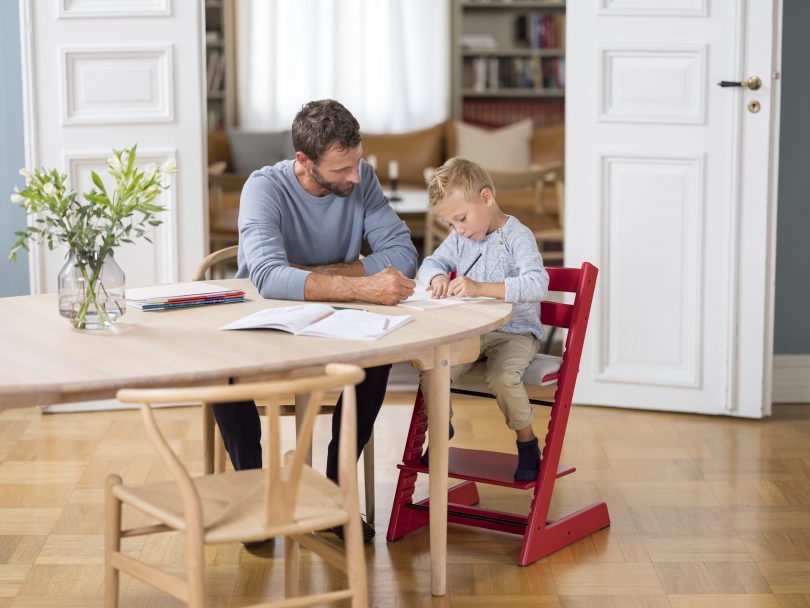The Positive Family Academy’s Linda McNeill shows how to turn adversity into opportunity for you and your family.
Even at the best of times, modern life can be a careful balancing act. As parents, many of us have to juggle external responsibilities such as work, school commitments and socialising, together with the myriad of family admin and responsibilities.
So now, with the rapid spread of COVID-19 and families across the UK self-isolating amidst a country-wide lockdown, Stokke expert Linda McNeill from The Positive Family Academy is sharing her tips and tricks on how to turn adversity into opportunity for you and your family.
Linda says: “The prospect of self-isolation and a lockdown is hugely overwhelming and will leave many parents wondering, ‘Just what are we going to do?!’”.
“Juggling the uncertainty of this global pandemic with working from home and parenting simultaneously will be no easy task, however there are some simple steps parents can take to streamline the process.
“For many families, spending this much time together will be something of a first, so instead of adding to the understandable fret and panic, see it as an opportunity. It’s all about taking control of what we can control and accepting that which we can’t.”
Below is Linda’s guide to maintaining family life during these challenging times.
Be honest
This is an unsettling time so it’s important to explain to your child what the plan is, that being at home might be tough at times but that you’re also all going to have a lot of fun.
A great idea is to set up a family meeting and brainstorm how you as a family are going to tackle being at home together every day. You might put together a set of family values which you all agree to. Draw them out and put it up in full view of everyone.
Set boundaries
At school kids aren’t allowed to watch TV, play computer games or use the iPad all day, so explain from the outset that this is going to be the same even though they are currently learning from home.
Whilst it’s obviously tricky if you’re trying to balance work with home-schooling, try and plan activities roughly equating to the hours of a school day. You may also like to plan in a set of rewards and consequences with them, as again they are very used to this being a motivating factor at school.
Home learning can be overseen by you or be independent and will need to be planned according to how available you or other caregivers are, at any given time.
Where it’s impossible to oversee work that needs supervision – and whilst it’s fine to introduce a bit of screen time – try activities that engage the brain that they can get on with by themselves – puzzles, activity books, colouring, maths or word games for example.
There’s a whole wealth of online learning apps so this is a great way of using a screen if necessary during the day.
Maintain a routine
Draw up a timetable of half hour or hour blocks for the week. Cover a range of supervised and independent activities including core subjects using school materials or online resources; reading; arts and crafts; as well as games and puzzles to promote soft skills.
Make sure this includes exercise and time outside in the fresh air where possible. Do this together with your kids so everyone has ownership over it.
A daily treat such as a movie or some screen time at the end of their ‘home-school day’ may incentivize them further to get through the more education items on their checklists.
Delegate responsibilities
For many children, spending time at home is a treat however this also means more housework – toys to put away, extra cooking and washing up. Create a list of simple household chores that your child can assist with, now that they are spending more time at home.
Whether it’s clearing dirty plates from the table, helping bathe and dress younger siblings, assisting with cooking or laundry or tidying their room.
This will help the whole house run more smoothly and reduce stress levels. You might like to put together a sticker chart to help with this.
Fresh air is a must
Fresh air is non-negotiable for any growing child (and adult!). If you have a garden, make sure to schedule time for outdoor play into your daily routine.
Set up an obstacle course, work through a list of different playground games, kick a football around, or do some gymnastics.
If you don’t have immediate access to an outdoor space, factor in two to three 15-30-minute slots a day to spend outdoors walking, running or exploring.
Maintain relationships
Many children might struggle with the idea of not seeing their friends for the forseeable future and that will be really hard on them.
Factor in some time each day to catch up with different classmates or family friends over FaceTime, WhatsApp, Skype or Zoom. They need the social interaction as much as we do!
Relax and have fun
Whilst it’s easier said than done, there are absolutely no benefits to getting stressed or anxious about things outside of your control.
How often do you get to spend uninterrupted quality time as a family? Probably not very often. So flip this challenging time on its head and consider the positives.
When you’re able to put the work aside, spend time connecting with the kids. Build forts, get crafting, bake cakes, video chat with grandparents and friends, explore new activities together…
Now is the time for everything you’ve never had the time or opportunity to do before.
For further tips from Linda McNeill click here.









Leave a Comment
You must be logged in to post a comment.